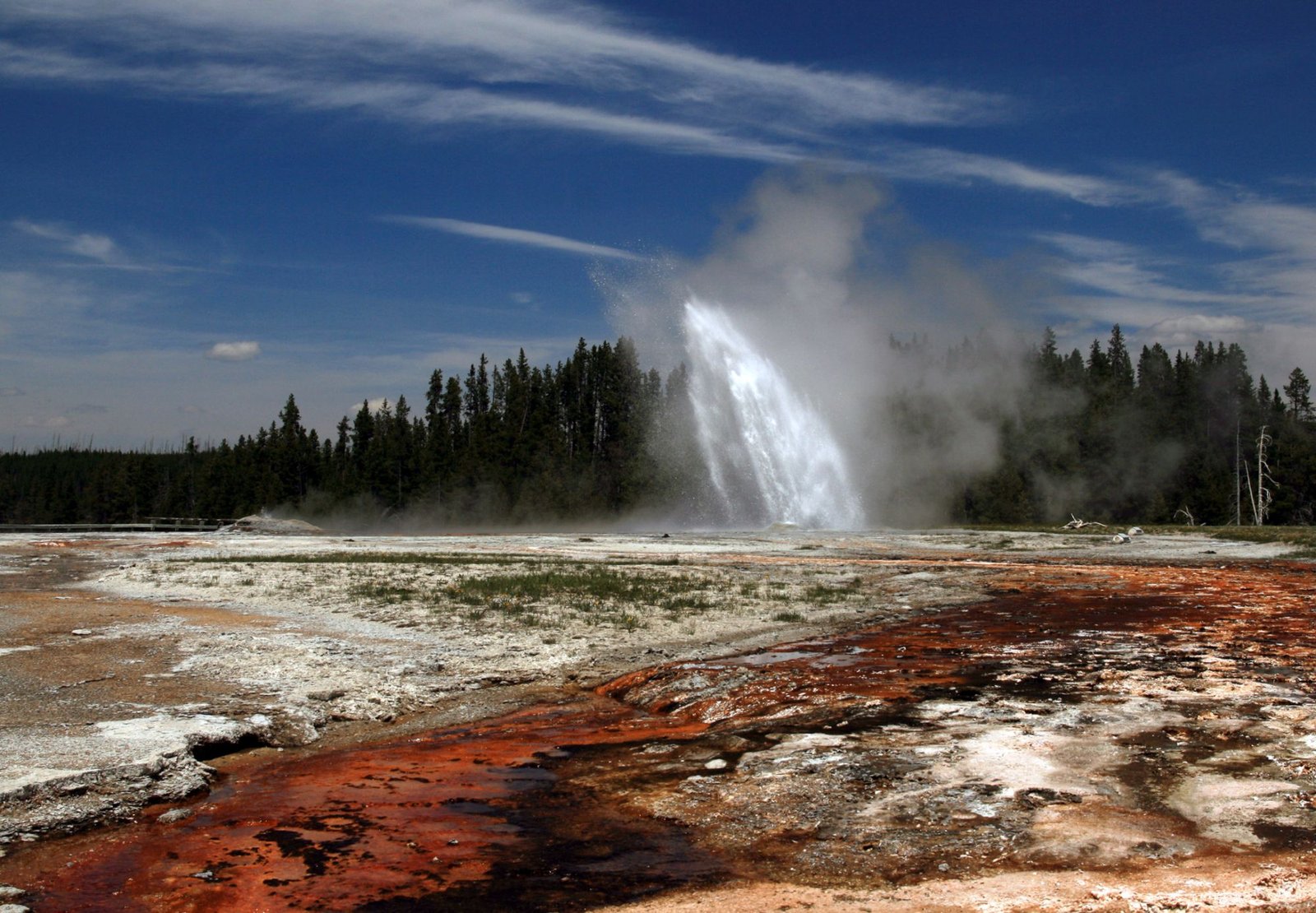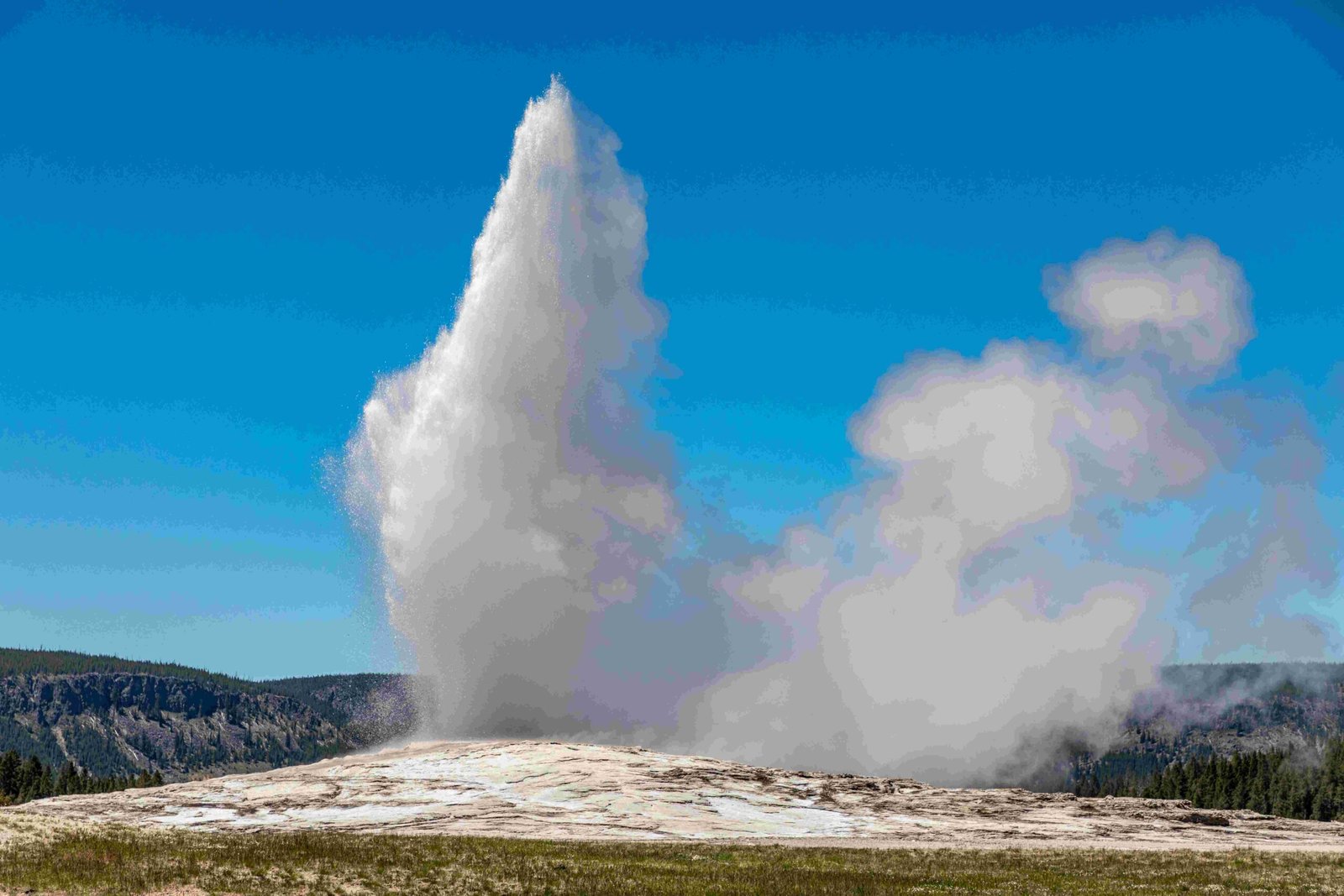The yellow monkey flower (Mimulus guttatus) is a striking wildflower native to Yellowstone National Park. This vibrant plant thrives in moist environments, often found near thermal areas, streambeds, and around Yellowstone Lake. With its bright yellow blooms and distinctive spotted petals, the yellow monkey flower adds a splash of color to the park’s diverse ecosystem. Blooming primarily in June and July, these flowers are a testament to the unique flora that call Yellowstone home.
What Are the Characteristics of Yellow Monkey Flowers?

Yellow monkey flowers are known for their distinctive appearance:
- Bright yellow, trumpet-shaped flowers
- Spotted or freckled petals
- Height ranging from 10 to 80 cm
- Oval-shaped, toothed leaves
- Prefer moist to wet habitats
These characteristics make the yellow monkey flower easily identifiable among Yellowstone’s diverse plant life.
Where Can Yellow Monkey Flowers Be Found in Yellowstone?

Yellow monkey flowers have specific habitat preferences within Yellowstone National Park:
- Near thermal areas
- Along streambeds
- Around Yellowstone Lake
- Firehole Lake Drive
- Wet meadows
- Seeps (natural water sources)
These locations provide the moist conditions that yellow monkey flowers require to thrive.
When Is the Best Time to See Yellow Monkey Flowers in Bloom?
To catch yellow monkey flowers in their full glory:
- Peak Bloom Period: June to July
- Best Viewing Time: Late spring to early summer
- Weather Conditions: Warmer, wetter days enhance visibility
Visitors planning to see these flowers should aim for these months to maximize their chances of witnessing the vibrant blooms.
How Do Yellow Monkey Flowers Adapt to Yellowstone’s Environment?
Yellow monkey flowers have developed several adaptations to thrive in Yellowstone’s unique ecosystem:
- Moisture Tolerance: Ability to grow in consistently wet areas
- Temperature Adaptation: Can withstand varying temperatures near thermal features
- Soil Flexibility: Grows in different soil types, including those influenced by geothermal activity
- Pollinator Attraction: Bright colors and patterns attract various pollinators
These adaptations allow yellow monkey flowers to flourish in Yellowstone’s diverse habitats.
What Role Do Yellow Monkey Flowers Play in Yellowstone’s Ecosystem?
Yellow monkey flowers contribute significantly to Yellowstone’s ecosystem:
| Role | Description |
|---|---|
| Pollinator Support | Attracts bees, butterflies, and other insects |
| Soil Stabilization | Root systems help prevent erosion in moist areas |
| Biodiversity | Contributes to the park’s plant diversity |
| Indicator Species | Their presence can indicate healthy wetland ecosystems |
Understanding these roles helps highlight the importance of preserving these flowers and their habitats.
How Are Yellow Monkey Flowers Protected in Yellowstone?
Yellowstone National Park has implemented several measures to protect yellow monkey flowers:
- Strict no-picking policy for all wildflowers
- Designated trails to prevent habitat disturbance
- Educational programs about plant conservation
- Monitoring of plant populations by park biologists
- Enforcement of ‘Leave No Trace’ principles
These protective measures ensure the continued presence of yellow monkey flowers for future generations to enjoy.
What Are Common Misconceptions About Yellow Monkey Flowers?
Several misconceptions exist about yellow monkey flowers:
-
Myth: They are related to monkeys
Fact: The name comes from the flower’s shape, not any relation to primates -
Myth: They only grow in Yellowstone
Fact: While common in Yellowstone, they are found in various western North American regions -
Myth: They are invasive species
Fact: Yellow monkey flowers are native to the area and play a crucial role in the ecosystem -
Myth: They bloom all year round
Fact: Their blooming period is primarily limited to June and July
Dispelling these myths helps visitors better understand and appreciate these unique wildflowers.
How Can Visitors Responsibly Observe Yellow Monkey Flowers?
To ensure the preservation of yellow monkey flowers, visitors should follow these guidelines:
- Stay on designated trails
- Observe flowers from a distance without touching
- Use zoom lenses for photography instead of getting too close
- Report any damage or disturbance to park rangers
- Participate in guided tours to learn more about the flowers and their habitat
By following these guidelines, visitors can enjoy the beauty of yellow monkey flowers while helping to protect them for future generations.
References:
- https://yellowstonetourguides.com/wildflowers-season-in-yellowstone-national-park/
- https://yellowstoneinsider.com/2015/07/30/yellowstone-natural-history-yellow-monkey-flower/
- https://www.yellowstone.co/wildflowers/monkeyflowers.htm

